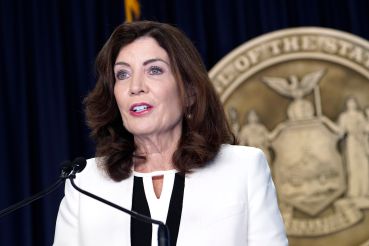Bursting the Bubble: Is NYC Real Estate Heading for a Crash?
By Robert Knakal April 15, 2014 6:00 am
reprintsOne of the questions I am most frequently asked these days is whether the commercial real estate sales market is experiencing bubble conditions. In answering this question, I usually say that current market conditions present excellent arguments both for and against a bubble. It is a question that would make a great topic for a college debate team.
The argument against believing we are in a bubble revolves around the fact that underlying fundamentals continue to improve month after month. Rents in all sectors (residential, retail and office) are climbing, but not at an above-trend rate. At the same time, occupancy rates are rising and leading to healthy net operating incomes.
Hotels are also performing extraordinarily well, with increasing daily rates and occupancies climbing.
Demand for investment properties among all major buying populations is currently off the charts. High net worth individuals and the old-line New York families are very active. Institutional capital has rebounded robustly and foreign capital continues to pour into the market at a record pace.
The supply of available properties for sale, while growing, remains at relatively low levels. Increasing values have proved to be compelling enough to induce property owners to take advantage of them by placing assets on the market. This should cause a near record number of properties to be sold this year. We expect that around 5,000 properties will trade hands in 2014.
Given the massive demand that exists, this increased supply will not exert any downward pressure on values.
Lastly, lenders have not gotten too aggressive with loan-to-value ratios, which theoretically makes buyers more disciplined in their acquisitions as equity requirements are heavy. Many optimists believe that a bubble will not be created until lending becomes less disciplined and equity requirements drop significantly.
The argument that bubble conditions do exist revolves around the disconnect between property value increases and the improvement in underlying fundamentals. Historically low interest rates augment this argument.
It’s true that underlying fundamentals have gotten better, but not to an extent at which current price levels are justified. Rents have improved—but only by 15 to 20 percent depending on asset class and location—yet values have hit all-time record levels in all product segments and in all submarkets. In some areas, values have tripled over the last 30 months. There is no justification for this.
There is so much demand that if 50 percent of the buyers looking to purchase properties in the city decided not to buy, there still would be excessive demand. The competition among these buyers is fierce. Layer on interest rates that are at historic lows and you see values skyrocket.
One problem is that the Fed is artificially manipulating rates. The economy is still only limping along even though we have had four years of unprecedented government intervention. With the trillions that have been pumped into the economy, gross domestic product growth should be significantly higher than it has been. Job growth, while just getting back to prerecession levels, has been mediocre at best. At some point we have to pay for the tripling of the money supply and a Fed balance sheet that has mushroomed.
History and economics both teach us that long periods of low interest rates create asset bubbles. However, we are in uncharted territory. Every economics textbook can be thrown away. There are no models that take into consideration what will happen when quantitative easing on the magnitude we have seen is injected into a market.
So, are we in a bubble or not? The jury is still out. Only time will tell. Until then, let the fun continue.


